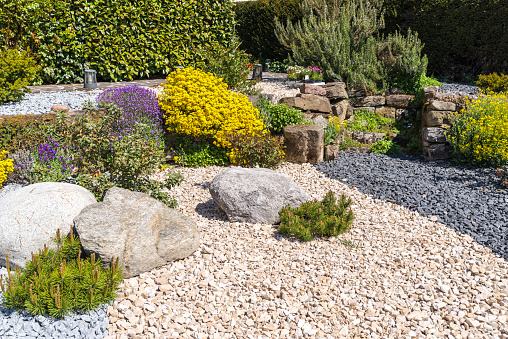As a result of wildfires, acres of land can be destroyed quickly, causing a great deal of damage to the environment. These natural disasters claim the homes and land of thousands of homeowners every year. The United States has been hit by a series of fires that have destroyed thousands of homes and millions of acres of land.
It is important to note that there are a number of reasons why so much land was burned, including the lack of fireproofing landscapes. Wildfires spread rapidly through rural landscapes because of plants abundant in rural areas, such as weeds, dried grass, and dead trees. The design of some plants and landscapes is also more likely to catch fire. The landscapes created by homeowners near these fires could unknowingly contribute to the destructive nature of wildfires.
Whether it’s installing a sprinkler system or managing your weed abatement, there are several ways to protect your property from damage during the wildfire season. Let’s take a closer look at a few of the ways to fire-proof your landscaping.
Fire Retardant Planting
Unfortunately, no plant species are “fireproof” against wildfires. This process, however, may be slowed down by high-moisture plants. For a fire-resistant landscape design, plant species with leaves that retain water within their stems are best. For your home’s safety, you should plant some of these types of flowers near your house to prevent them from being damaged by a fire that spreads rapidly.
Flowering bushes and other plants can also be used in landscaping to create a fire-resistant environment. Some of the most fire-resistant plants include California fuchsia, sage, and french lavender. High-flammability plants should be avoided, such as ornamental grasses, rosemary, and lichen-type plants. Planting these near your home is not recommended if you live in an area at high risk of wildfires.
Regular Pruning
Keeping tall trees or thick shrubs around your house pruning is an essential part of maintaining your house. The overhanging branches of these plants and trees are easily able to spread wildfires if they are close to or above structures. It’s important to shape bushes and shrubs around the house to avoid getting in the way of windows where fires can quickly spread. Trees and plants grow better if branches are pruned correctly, which reduces the likelihood of dead, highly flammable limbs.
Generally, branches should be at least 6 feet above the ground and 10 feet apart. You can do this yourself, in some cases, by using shears or a chainsaw if you know what you are doing. Leave it to the landscaping experts, however, if your trees are exceedingly tall or have thick branches. As far as cutting off large branches goes, there shouldn’t be a danger to your roof or any injuries to you during this process.

Prescribed Burns
Forest management organizations and fire departments often conduct prescribed burns to control wildfire spread in at-risk areas. A controlled fire is used to burn plots of land while using flammable fuels to burn dried grass and other factors that can cause wildfires.
In addition to preserving biodiversity in the area, this practice is also responsible for replenishing it with nutrients. Killing pests and allowing the soil to absorb nutrients from the sun and rain, actually helps enrich the soil. The new plants will grow back stronger next season as a result.
Even though this is usually used around forests, it can also be used on residential properties. Farmland and large gardens can benefit from prescribed burns for controlling weeds and vermin. Nonetheless, you should be extremely cautious since you can easily lose control of the fire if you are not careful. Try this tactic only if you are specially trained or if you hire a fire contractor company.
Fire Resistant Materials
It is always a good idea to consider fire resistance when you are designing outdoor spaces. If you plan to patio, build a deck, or a garden box, consider using brick or stone instead of wood. In addition to being more fire-resistant, these are better for the environment if made from sustainable materials.
Another great idea for your yard is to build natural stone retaining walls. Adding retaining walls to natural slopes can prevent erosion and create stopping points for fire landscaping. Stone retaining walls can help slow the spread of landslides and fires if your home is on a hill. Retaining walls can also provide additional structural support to a hill or cliff. For additional protection from erosion caused by wildfires, retaining walls stabilize the soil.
It is always important to ensure that your family and home are protected. Follow some of these tips to help you fireproof your landscaping.






